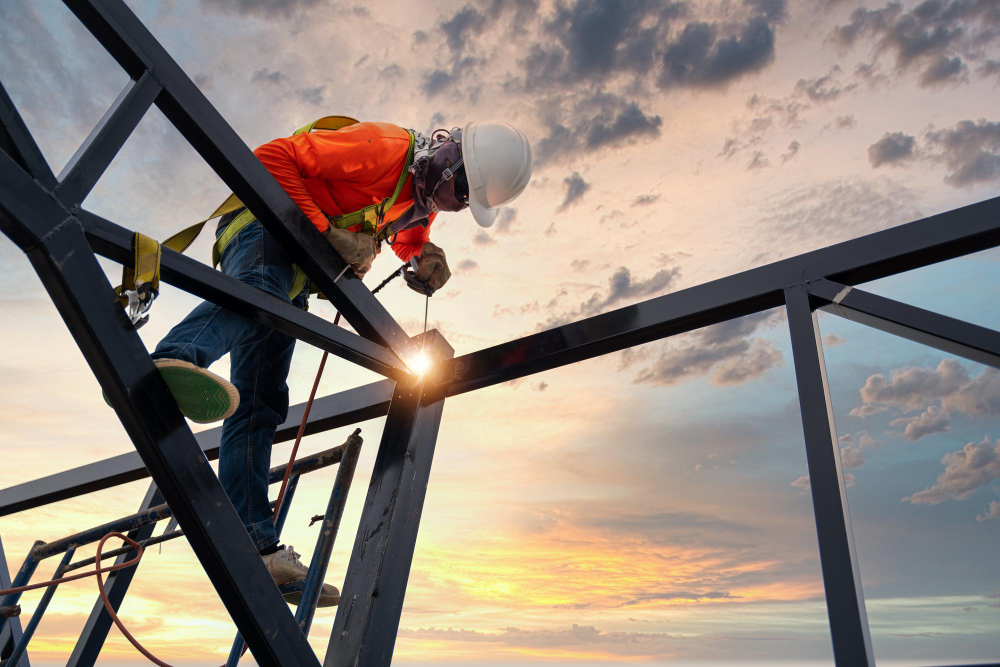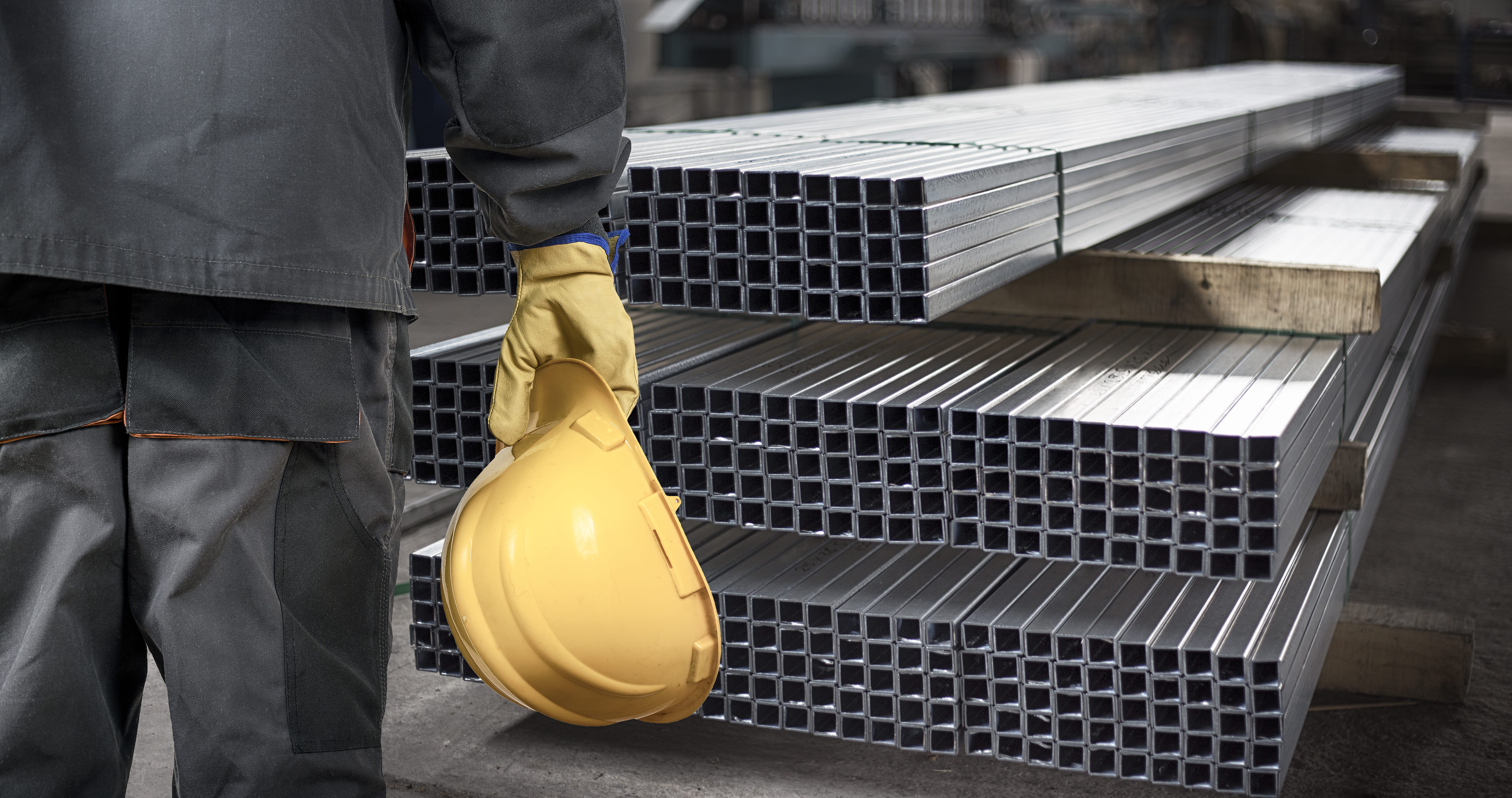Specialist Steel Fabricators Melbourne: Top Quality You Can Trust
Specialist Steel Fabricators Melbourne: Top Quality You Can Trust
Blog Article
Comprehensive Analysis of Cutting-Edge Techniques in Steel Manufacture Market
As the steel fabrication sector remains to evolve, the assimilation of advanced strategies has come to be essential for remaining competitive and fulfilling the demands of modern-day manufacturing criteria. From laser cutting improvements to the usage of robotics and 3D printing in steel production, the landscape of fabrication strategies is rapidly altering. With each innovation bringing its very own collection of benefits and obstacles, a comprehensive analysis of these strategies is paramount for business intending to improve their procedures, boost precision, and eventually, boost the quality of their steel construction result. In this dynamic market where modern technology plays a critical role, recognizing the subtleties of these advanced techniques is not simply an option however a need for those looking to create in advance in the ever-evolving world of steel construction.
Laser Reducing Innovations
In the world of steel manufacture, laser cutting advancements have actually revolutionized the precision and effectiveness of metal shaping processes. By utilizing the power of concentrated laser beams, manufacturers can now attain unparalleled degrees of precision when puncturing various sorts of steels. This modern technology allows elaborate designs to be executed with marginal product waste, making it an affordable service for industries calling for high precision components.
Among the crucial advantages of laser cutting is its ability to take care of a large range of products, consisting of stainless steel, light weight aluminum, and carbon steel, effortlessly. The process generates tidy, burr-free edges, removing the requirement for additional ending up steps. In addition, the non-contact nature of laser reducing reduces the threat of material contamination, causing higher quality final result.
In addition, laser cutting equipments can be programmed to make swift, specific cuts, considerably reducing production time contrasted to conventional reducing methods. This rate and accuracy make laser reducing particularly appropriate for automation atmospheres where performance is critical. As modern technology remains to development, laser cutting is positioned to play an increasingly essential role in the steel construction sector.

CNC Machining Innovations
The advancement of CNC machining innovations has actually introduced a new era of precision and performance in the steel manufacture industry. Computer Numerical Control (CNC) makers have actually changed steel fabrication by providing unequaled precision and repeatability in the production procedure. steel fabricators melbourne. One of the crucial advancements in CNC machining is the assimilation of innovative software systems that enable real-time monitoring and adjustments, resulting in improved productivity and high quality control
Additionally, the advancement of multi-axis CNC devices has enabled for the construction of complex steel components with intricate designs that were formerly testing to generate. These makers can do a large range of machining operations, including milling, drilling, transforming, and grinding, all with high levels of accuracy.
Furthermore, the unification of automation and robotics in CNC machining has streamlined manufacturing processes, lowered preparations, and lessened the margin of error. This combination of sophisticated technologies not only boosts performance but also ensures regular top quality across all produced steel parts. To conclude, CNC machining technologies continue to drive innovations in the steel fabrication industry, establishing new requirements for accuracy and productivity.
Automated Welding Technologies
Automated welding modern technologies have actually transformed the steel construction sector, boosting effectiveness and accuracy in the welding procedure. These cutting-edge modern technologies use computer-controlled systems to automate the welding procedure, resulting in greater efficiency levels and enhanced weld quality. One of the essential benefits of automated welding is the capability to perform intricate welds with constant precision, reducing the likelihood of mistakes and rework.
Robot welding systems go to the leading edge of automated welding modern technologies, supplying unrivaled rate and accuracy. These systems can take care of a vast array of welding tasks, from simple to detailed, effortlessly (Alpha reo). By making use of sophisticated sensors and software program, robot welders can adjust to variations in material and joint geometry, making sure an attire and trustworthy weld
In addition, automated welding innovations boost workplace safety by decreasing the direct exposure of human welders to harmful fumes and extreme heat. As the steel fabrication sector remains to progress, including automated welding modern technologies will be crucial for companies looking to remain competitive and fulfill the growing demands for top notch bonded items.
Robotics Assimilation in Manufacture
Using robot systems in manufacture procedures has become a critical approach for boosting efficiency and precision in modern manufacturing settings. Robotics integration in steel construction provides a myriad of advantages, including increased productivity, improved quality assurance, and enhanced safety and security steps. These advanced robot systems are geared up with advanced sensors and programs capabilities, enabling them to carry out detailed tasks with a high degree of precision and repeatability.
One of the crucial benefits of robotics assimilation in steel fabrication is the capacity to automate recurring tasks, such as product handling, look at here cutting, welding, and assembly procedures. This not just quickens manufacturing cycles however also reduces the threat of human error, bring about higher overall product high quality. Additionally, robots can operate 24/7, substantially boosting production result and meeting limited job due dates.

3D Printing in Steel Manufacturing
Having actually changed the steel fabrication market with robotics assimilation, the burgeoning exploration of 3D printing in steel production is positioned to more advance the realm of contemporary production strategies. 3D printing, additionally steel fixing known as additive manufacturing, provides unmatched layout liberty and intricacy, enabling the creation of elaborate steel structures that were previously unattainable with standard production approaches. By making use of computer-aided layout (CAD) software, manufacturers can precisely control the layer-by-layer deposition of steel material, resulting in get rid of enhanced functionalities and geometries.
One of the key benefits of 3D printing in steel production is its capacity to lower product waste dramatically. Unlike subtractive production processes where excess material is trimmed away, 3D printing only makes use of the essential quantity of steel required for the final part. This performance not just causes set you back savings but additionally straightens with lasting manufacturing practices by minimizing ecological effect.
Additionally, 3D printing allows rapid prototyping and modification, enabling the production of small sets of complicated steel components with brief preparations. As the innovation continues to grow and end up being more accessible, its assimilation into mainstream steel fabrication procedures is expected to drive innovation and performance across the industry.
Verdict
Finally, the steel fabrication industry has seen significant improvements in methods such as laser cutting, CNC machining, automated welding, robotics assimilation, and 3D printing. These sophisticated technologies have revolutionized the way steel products are manufactured, resulting in enhanced precision, cost-effectiveness, and efficiency. Proceeded financial investment in these ingenious methods is important for the market to stay affordable and fulfill the needs of contemporary manufacturing processes.
As the steel fabrication sector proceeds to progress, the combination of advanced techniques has actually ended up being vital for staying competitive and satisfying the needs of modern-day manufacturing criteria.One of the essential benefits of laser cutting is its capability to handle a large range of products, consisting of stainless steel, aluminum, and carbon steel, with ease.Automated welding modern technologies have actually transformed the steel fabrication sector, improving efficiency and accuracy in the go to my blog welding process.Having actually reinvented the steel fabrication sector with robotics assimilation, the blossoming exploration of 3D printing in steel production is poised to more advancement the world of contemporary manufacturing methods.In conclusion, the steel construction industry has actually seen significant improvements in techniques such as laser cutting, CNC machining, automated welding, robotics assimilation, and 3D printing.
Report this page